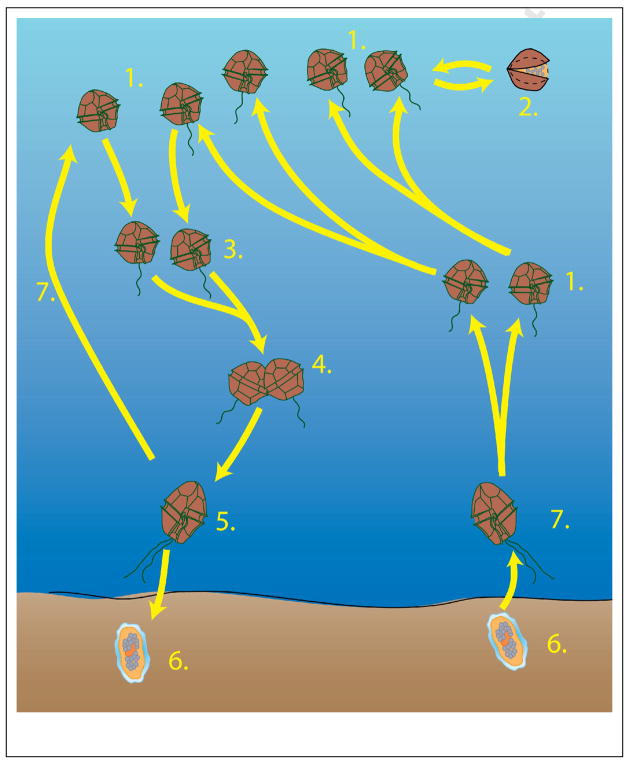Figure 3.
Schematic representation of the life cycle of heterothallic Alexandrium species. Species have a haplontic life cycle, i.e. the motile vegetative cells (1) are haploid. Under specific conditions, usually related to stress, some vegetative cells can transform into a non-motile pellicle cyst (2) that can rapidly switch back to the motile stage when conditions improve. The sexual phase starts with the formation of gametes (3), which conjugate (4) and form a diploid planozygote (5). Depending on environmental conditions, the planozygote can transform into a resting cyst (hypnozygote (6) or, for some species, can undergo meiosis and produce a vegetative cell (1). Cysts can spend variable periods of time in the sediments and, upon germination, release a motile cell

